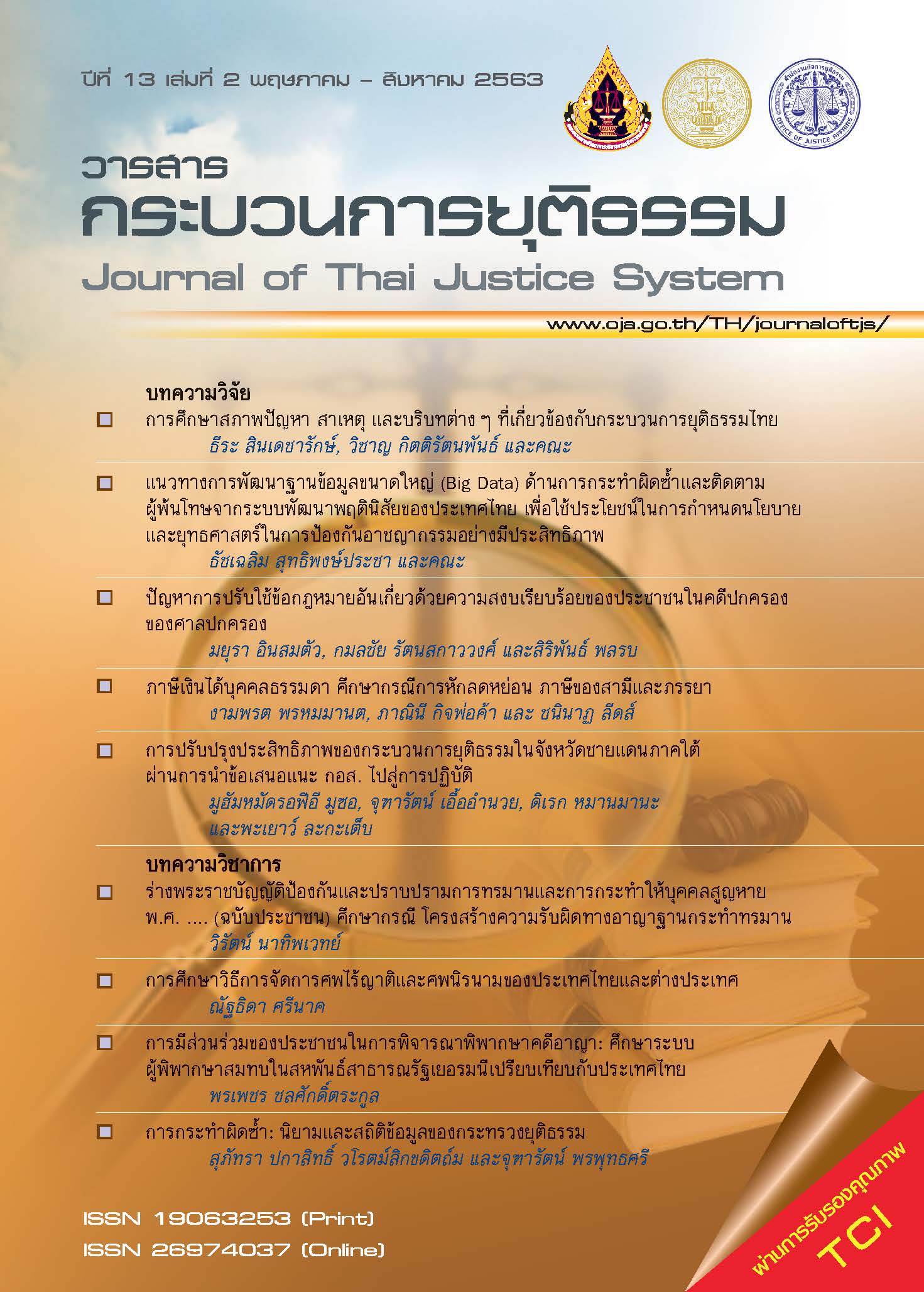Recidivism: Definition and Data Measurement of Ministry of Justice of Thailand
Main Article Content
Abstract
The definition of “recidivism” is varied base on the objective of policy makers and government sectors. According to several theories, practices and review literatures about the meaning of “recidivism” or “re-offending”, it can be said that recidivism means a person who commits a crime and get punishment when released back to the society he or she recommit a crime. The measurement of recidivism or re-offender number can be counted by criminal acts of released offenders as; re-arrest; reconviction or reimprisonment together with time period of re-offending. However, the definition of recidivism in Thailand is defined and measured in various terms depend on the determination of departments involved in correction and rehabilitation process. There are three main departments which are responsible for both adult and juvenile offender in Thailand as follows (1) Department of Correction, defines recidivism as a released prisoner who commits a crime and sentenced to prison again including detained person (2) Department of probation, defines recidivism as a released probationer with no conditions who commits a crime and sentenced to punishment again whether in department of correction, department of probation or department of juvenile observation and protection; (3) Department of juvenile observation and protection defines recidivism as a juvenile who is released from juvenile training centers and being arrested again within 1-3 years.
Article Details
Published Manuscripts are the copyright of the Journal of the Justice System. However; the opinions that appeared in the content are the sole responsibility of the author.
References
กรมพินิจและคุ้มครองเด็กและเยาวชน. (2562). ข้อมูลสถิติการกระทำผิดซ้ำของกรมพินิจและคุ้มครองเด็กและเยาวชนระหว่างปีงบประมาณ พ.ศ. 2558 จนถึงปีงบประมาณ พ.ศ. 2561. กรุงเทพฯ: ผู้แต่ง.
กรมราชทัณฑ์. (2563). ฐานข้อมูลผู้ต้องขังกระทำผิดซ้ำ (Recidivism Statistics Database). ค้นเมื่อ 12 เมษายน 2563, จาก http://www.correct.go.th/recstats/
พระราชบัญญัติศาลเยาวชนและครอบครัวและวิธีพิจารณาคดีเยาวชนและครอบครัว พ.ศ. 2553. (2559). ราชกิจจานุเบกษา, 133(109ก), 24
สำนักงานกิจการยุติธรรม. (2561ก). รายงานการประชุมคณะทำงานพัฒนาข้อมูลการกระทำผิดซ้ำ ครั้งที่ 1/2561. ใน การประชุมคณะทำงานพัฒนาข้อมูลการกระทำผิดซ้ำ ครั้งที่ 2/2561. กรุงเทพฯ: ผู้แต่ง.
สำนักงานกิจการยุติธรรม. (2561ข). รายงานสถานการณ์อาชญากรรมและกระบวนการยุติธรรม ประจำปี 2560 และ 2561. ค้นเมื่อ 12 เมษายน 2563, จาก http://www.oja.go.th/TH/whitepaper2018/
Butorac, K., Gracin, D., & Stanic, N. (2017). The Challenges in Reducing Criminal Recidivism. Public Security and Public order, 2017(18), 115-131.


